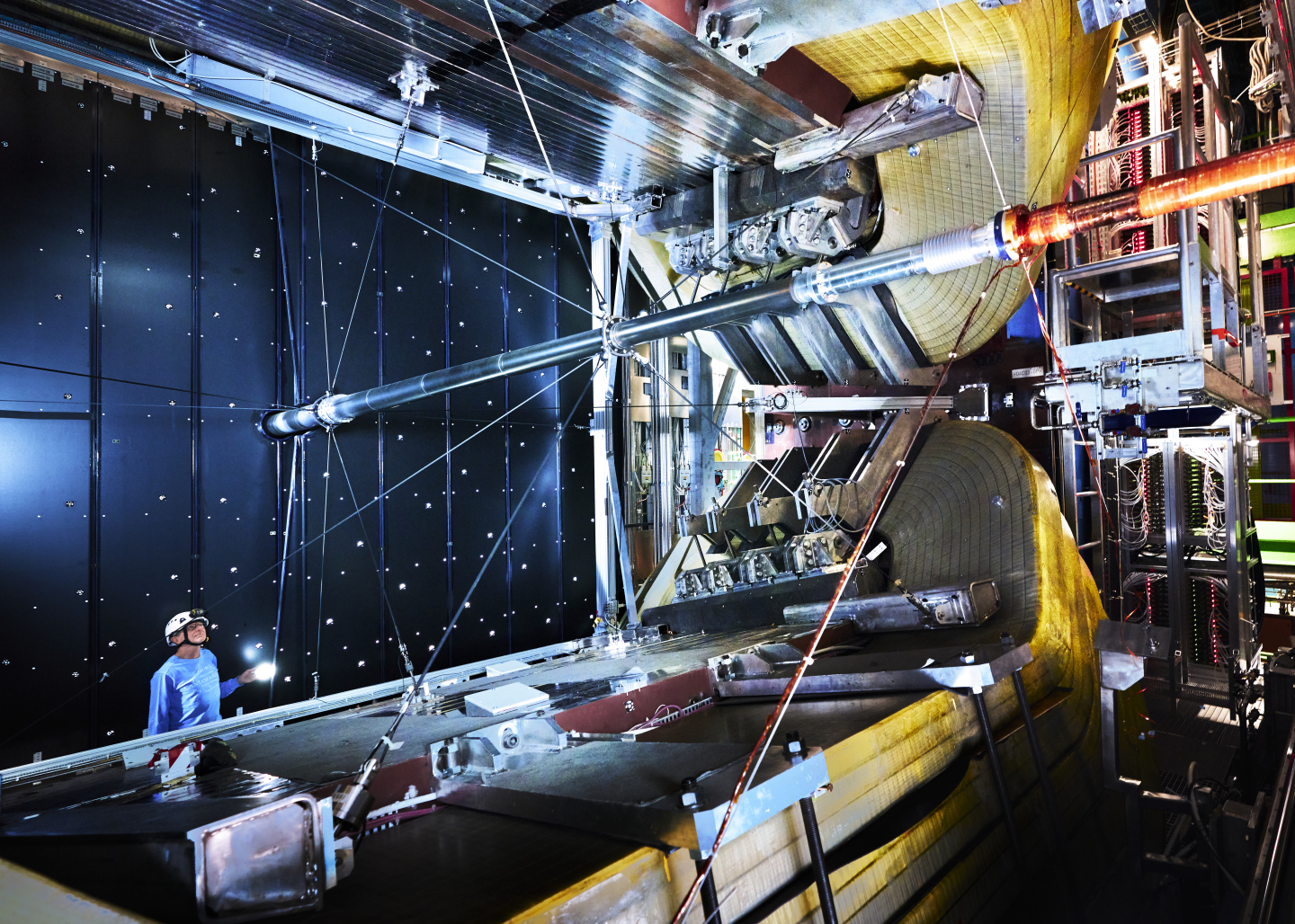LHCb tightens precision on key measurements of matter–antimatter asymmetry
The Big Bang is thought to have created equal amounts of matter and antimatter, yet the Universe today is made almost entirely of matter, so something must have happened to create this imbalance. The weak force of the Standard Model of particle physics is known to induce a behavioural difference between matter and antimatter – known as CP symmetry violation – in decays of particles containing quarks, one of the building blocks of matter. But these differences, or asymmetries, are hard to measure and insufficient to explain the matter–antimatter imbalance in the present-day Universe, prompting physicists to both measure precisely the known differences and to look for new ones. At a seminar held at CERN today, the LHCb collaboration reported how it has measured, more precisely than ever before, two key parameters that determine such matter–antimatter asymmetries. In 1964, James Cronin and Val Fitch discovered CP symmetry violation through their pioneering experiment at Brookhaven National Laboratory in the US, using decays of particles containing strange quarks. This finding challenged the long-held belief in this symmetry of nature and earned Cronin and Fitch the Nobel Prize in Physics in 1980. In 2001, the BaBar experiment in the US and the Belle experiment in Japan confirmed the existence of CP violation in decays of beauty mesons, particles with a beauty quark, solidifying our understanding of the nature of this phenomenon. This achievement ignited intense research efforts to further understand the mechanisms behind CP violation. In 2008, Makoto Kobayashi and Toshihide Maskawa received the Nobel Prize in Physics for their theoretical framework that elegantly explained the observed CP violation phenomena. It its latest studies, using the full dataset recorded by the LHCb detector during the second run of the Large Hadron Collider (LHC), the LHCb collaboration set out to measure with high precision two parameters that determine the amount of CP violation in decays of beauty mesons. One parameter determines the amount of CP violation in decays of neutral beauty mesons, which are made up of a bottom antiquark and a down quark. This is the same parameter as that measured by the BaBar and Belle experiments in 2001. The other parameter determines the amount of CP violation in decays of strange beauty mesons, which consist of a bottom antiquark and a strange quark. Specifically, these parameters determine the extent of time-dependent CP violation. This type of CP violation stems from the intriguing quantum interference that occurs when a particle and its antiparticle undergo decay. The particle has the ability to spontaneously transform into its antiparticle and vice versa. As this oscillation takes place, the decays of the particle and antiparticle interfere with each other, leading to a distinctive pattern of CP violation that changes over time. In other words, the amount of CP violation observed depends on the time the particle lives before decaying. This fascinating phenomenon provides physicists with key insights into the fundamental nature of particles and their symmetries. For both parameters, the new LHCb results, which are more precise than any equivalent result from a single experiment, are in line with the values predicted by the Standard Model. “These measurements are interpreted within our fundamental theory of particle physics, the Standard Model, improving the precision with which we can determine the difference between the behaviour of matter and antimatter,” explains LHCb spokesperson Chris Parkes. “Through more precise measurements, large improvements have been made in our knowledge. These are key parameters that aid our search for unknown effects from beyond our current theory.” Future data, from the third run of the LHC and the collider’s planned upgrade, the High-Luminosity LHC, will further tighten the precision on these matter–antimatter asymmetry parameters and perhaps point to new physics phenomena that could help shed light on what is one of the Universe’s best-kept secrets. Find out more on LHCb's website: precise measurement of the CP-violating phase φs and precise measurement of the unitarity triangle angle β







